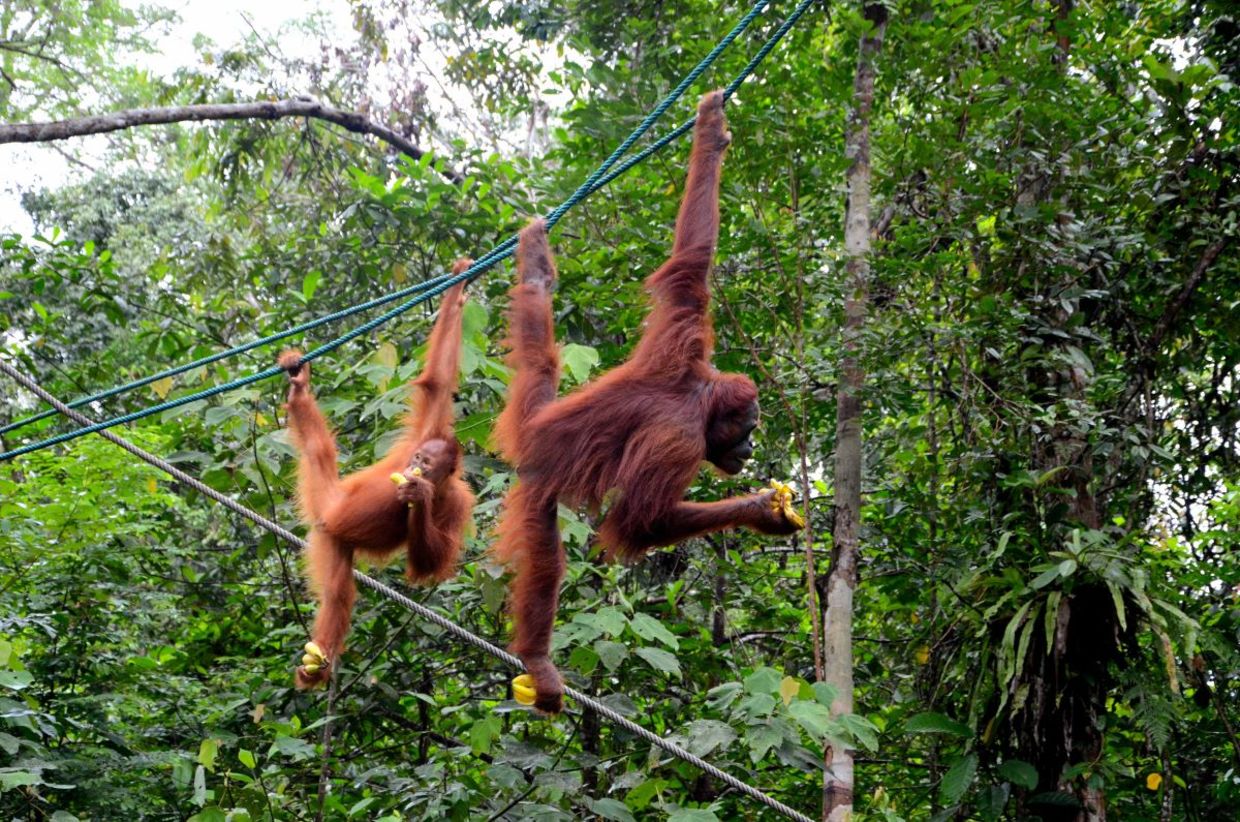
(imranahmedsg / Shutterstock.com)
Scientists have known for years that great apes like to play. But a new discovery shows that apes also have a sense of humor and like to play jokes on each other.
A new study published in the Proceedings of the Royal Society B has given scientists new insight into the lives of humanity’s closest relatives. It turns out that humans are not the only species to tease each other; great apes do it too.
Different forms of playful teasing
The idea that great apes play is not new. According to the Washington Post, the great primatologist Jane Goodall observed young chimpanzees playfulling disturbing their elders by jumping, biting, and pulling hair. However, no one had ever taken the time to identify and characterize the type of play that great apes engage in; until now.
“This is not a behavior that was never observed”, Dr. Isabelle Laumer, a primatologist at the Max Planck Institute of Animal Behavior and the lead author of the new study, told the Washington Post.
“It was just that we were the first ones that really systematically had a look at the playful teasing behaviors and studied them and just tried to describe them.”
In February 2024, Laumer and her colleagues published a study that systematically described the various play behaviors seen in great apes. According to New Scientist, the researchers studied 75 hours of video footage and documented 504 social interactions between bonobos, orangutans, gorillas (western and eastern), and chimpanzees. The researchers then identified 18 types of teasing behavior, such as hitting, hair pulling, biting, and more.
Testing boundaries
So what characterizes playful teasing among great apes, and what differentiates it from aggressive teasing?
According to the Washington Post the researchers found that in playful teasing juvenile apes would often engage with older apes, and that their behavior was met with either a positive or neutral reaction as opposed to an aggressive one.
If met with a non-reaction, the young ape would often repeat the behavior with greater intensity until they received reaction or the other ape just walked away. In addition, the apes would often look at the face of the individual they were teasing after the act, as if to gauge what their reaction would be.
Though researchers are still not certain as to what social function teasing plays in ape behavior, they do have some theories. It could be entertainment, or it could be a way for juvenile apes to learn how to understand their social partners.
Knowing what they can get away with, and with whom, can teach them a lot about boundaries, but also group hierarchies and social norms.
Additionally researchers theorize that the shared ancestors between great apes and humans may have also had the capacity to joke and tease and that this type of behavior is perhaps the precursor to humor.
Whatever the case, this vital study enriches humanity’s understanding of our closest relatives and highlights the shared traits between us.
YOU MIGHT ALSO LIKE:
Restoring a Home for Orangutans in Malaysia
New Research Shows That Apes Remember Their Friends
New Study Shows that Chimpanzees Share Experienc







